No products in the cart.
- Login / Register
- Member Area

Yacht Club Burgees
On the following pages are the yacht club burgees historically enrolled with the Register.
It is generally accepted that any new burgee or change to an enrolled burgee will not be accepted by the Register if it too closely resembles another enrolled burgee.
Kindly contact us in the event of changes.
D - L
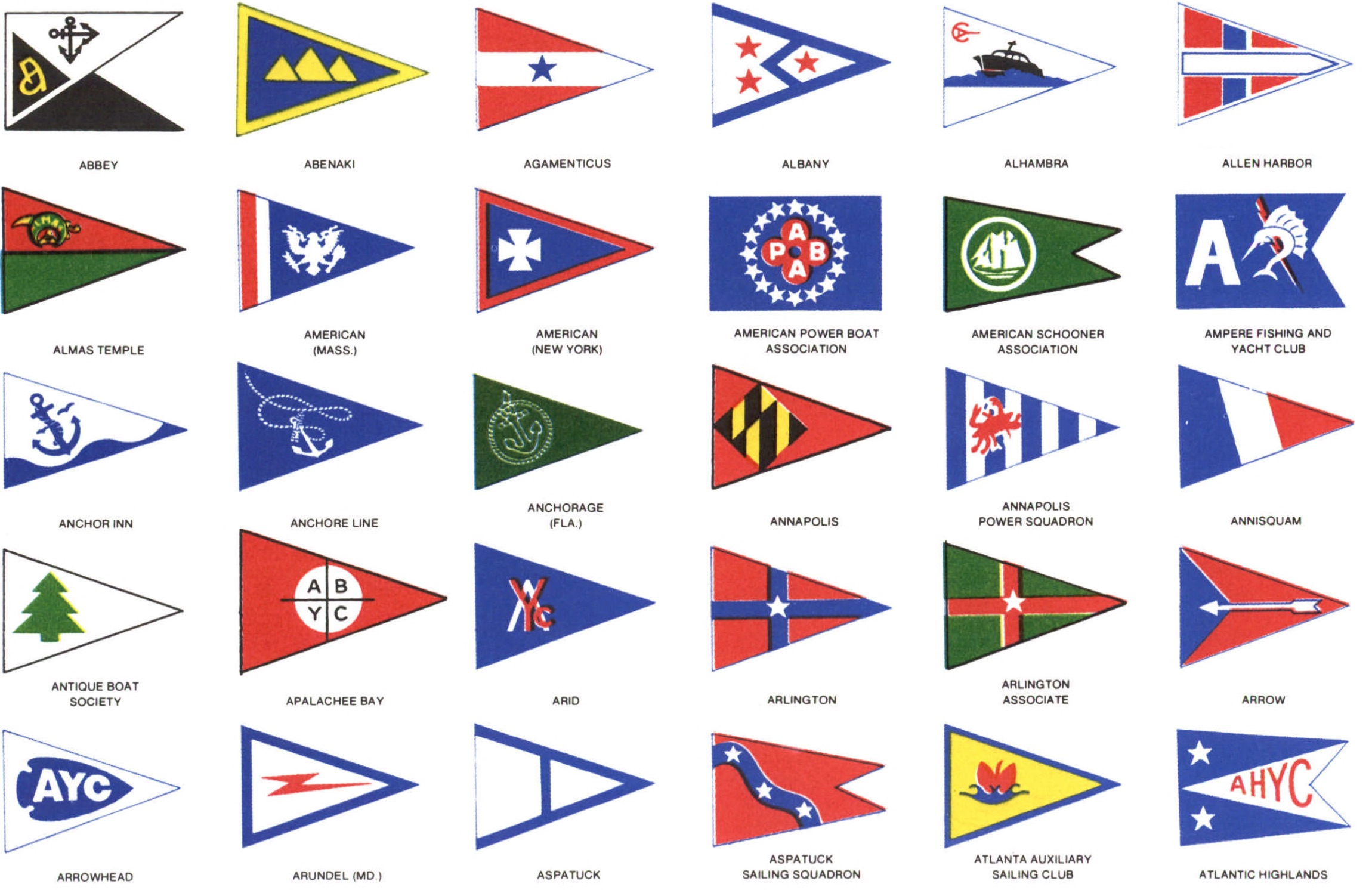
619-497-2220
- General Email
- Pay Your Invoice
- Course Supplies
- Pink Products
- Combo Deals
- Color Swatches
- Yacht Club Burgees
- Officer Flags & Pins
- Sail Class Burgees
- Power Squadron
- Award & Brag Flags
- Signal Flags
- Ensign Flags
- Bullions, Hat Insignias, Epaulets, and Lapel Pins
- Framed Flags
- Shadowboxes
- Pro Shop Supplies
- U.S., State & Intl Flags
- Digital Flags
- The Difference
- Our Guarantee
- Testimonials
- Breaking News
- Prestige Patents
- Prestige on Youtube
- Prestige Photos
- Prestige Live

Customize your flag!
Yacht burgees, all flags constructed of premium nylon.
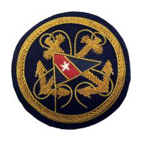
Bullions, Insignias, Epaulets
Give us a call to find out if we have your design on file. if we don't have it, we can arrange to have your design digitized by our skilled art department. if you are in the planning stages of your burgee design, the steps below will help you to get your burgee design from an idea to a high quality prestige flag burgee, recomended flag sizes (click here).

Appliqued Cut & Stitch Burgees
• clean high quality look • top quality threads • durable nylon flag material • state-of-the-art stitching method • special coated nylon resists ultraviolet light • call for quanities over 100, these prices are for club flags that are applique (cut and stitched). there is a one time set-up fee of $85.00 if pattern is not on file. price list is for read wrong applique (additional charge for flags that “read right” on both sides). overly intricate designs or appliques will be quoted separately. quantities of 5 or less will be quoted separately..
- $130.00 ea.
- $170.00 ea.
- $250.00 ea.
- Call us now!
Embroidered Logo Burgees
• clean high quality look • top quality threads • durable nylon material • state-of-the-art printing method • call your account representative for pricing..
- Embroidered Logo
- Starting at

Digital Logo Burgees
• print high-quality graphics and designs • flag base and logo colors are now endless • ddurable polyester flag material • photo-realistic print • state-of-the-art printing method.
- Double Base

Silkscreened Burgees
• great for intricate logos • durable 400 denier nylon • minimum order, 10 at this price • screen charges only $35 per color.
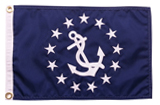
Officer Flags, Pins and Lapels
• officer flags • commodore flag • secretary flag • treasurer flags • fleet captain flags • and many more.
- • Lapel pins
- • Flag Pins
- • Table Flags
- Officer Flags
- Officer Pins
- Table Flags
- $120.00 ea.

- Power Squadron Flags
• Squadron Officers • District Officers • National Squadron Officers • Signal Flags • Past Officers Signal Flags
.jpg)
U.S. Ensign Flags
• all u.s. armed forces flags • first navy jack • pow/mia flags • signal flags • skin diver • union jack (king’s colors) and many more..
.jpg)
Sea Scout Flags
• sea scout leader flags • national flagship and flagship fleet flags • sea scout leader flags 16" x 24".
- Standard Size
- Suitable Use Afloat
- Sea Scout Leader
- $200.00 ea.
- $150.00 ea.
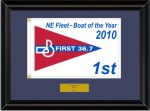
Custom Framed Yacht Flags
• sell on your website or newsletter • great idea for captains and their crew • use as awards for regattas and races • club officer recognition, both past and present.
- Small Frame
- Burgee & Bullions
- Please Call
591 Camino De La Reina, Suite 917, San Diego, CA. 92108
1-800-876-5155 or 619-497-2220, copyright © prestige flag & banner inc. all rights reserved. patents page.

Yacht Club Burgees
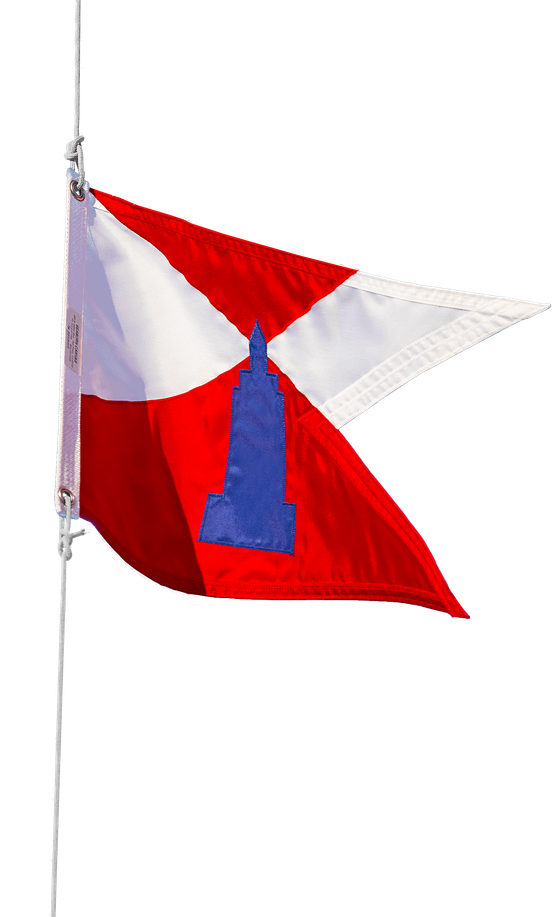
Slide title
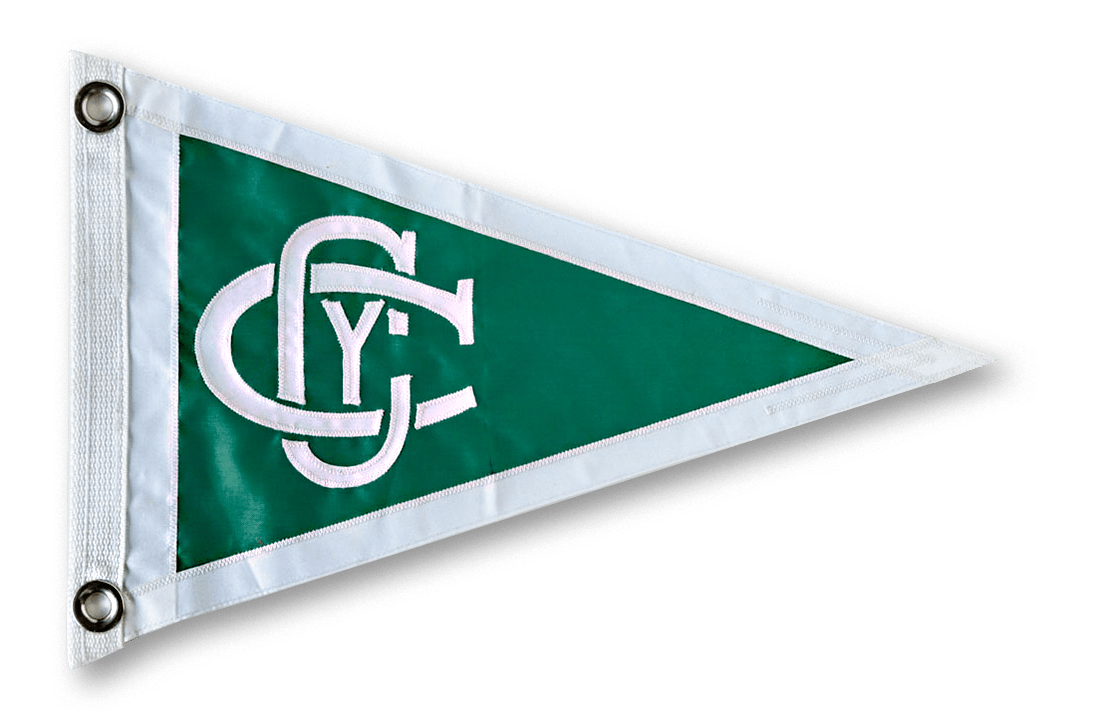
Pennant Shape
Solid or multiple colors with your design added. Any size with any colors.
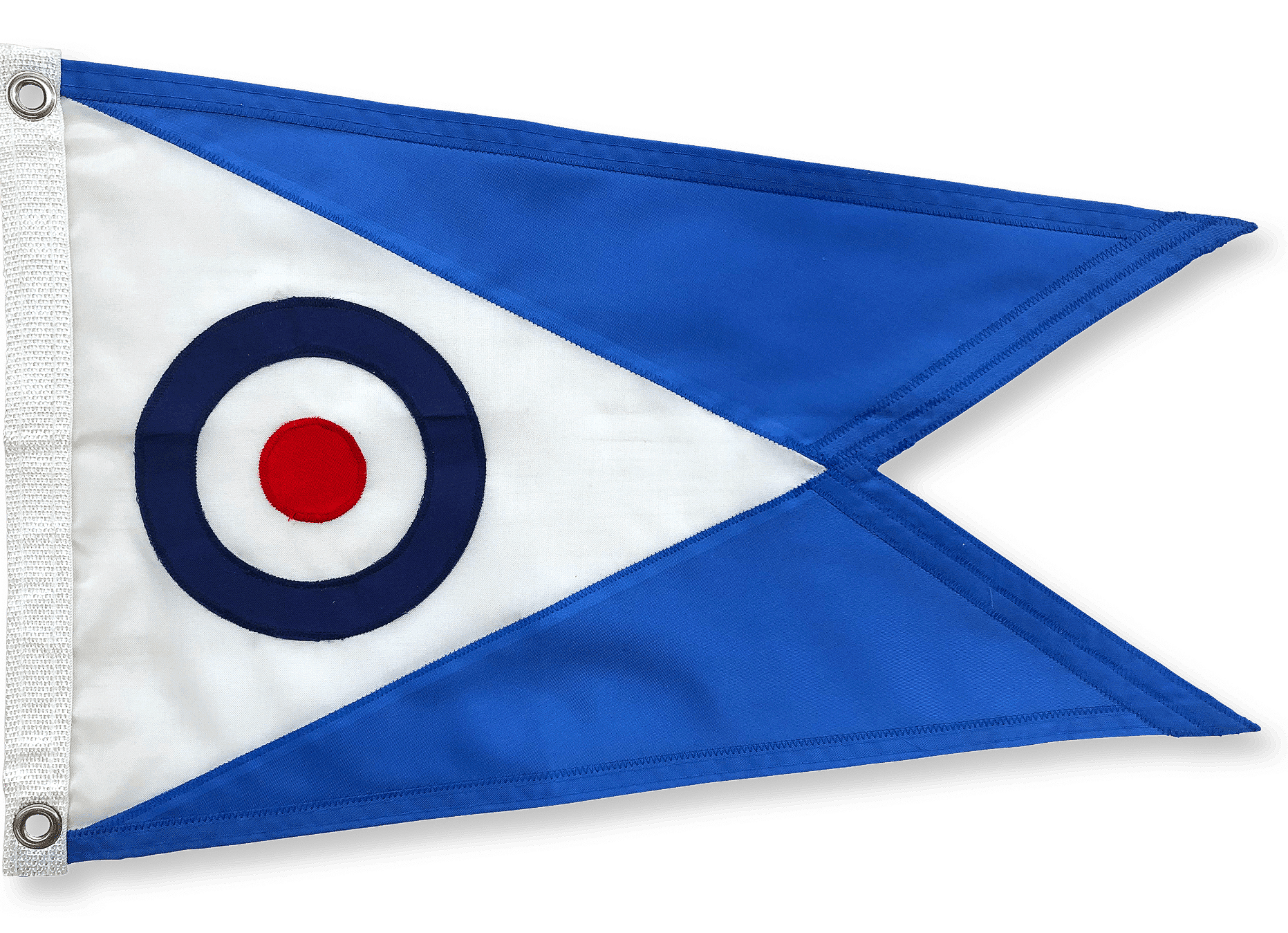
Swallowtail
Available in any color combination and any size. Can be customized.
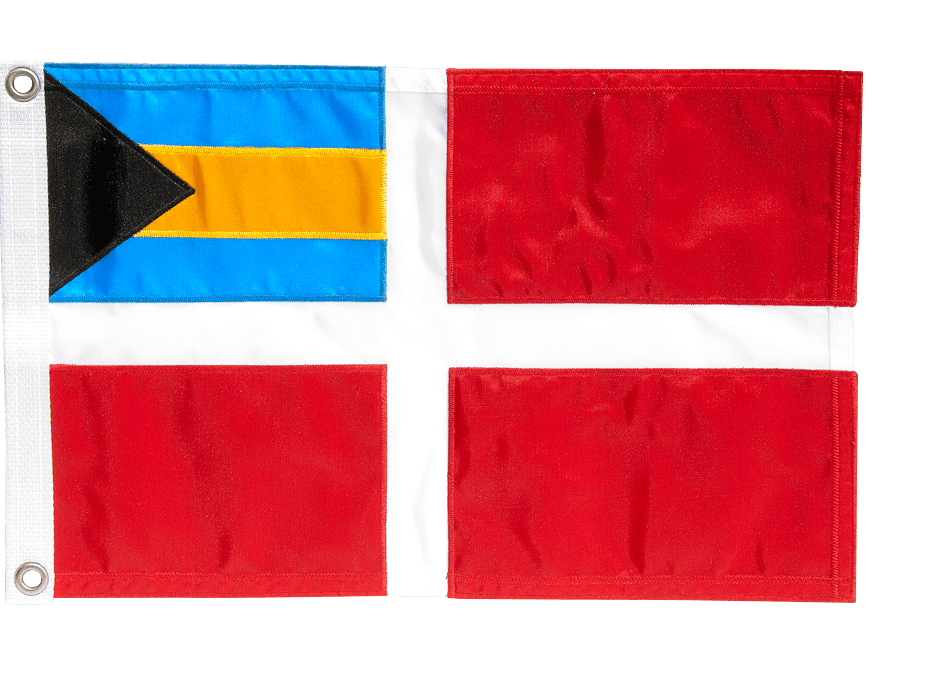
A rectangular burgee shape. Colors may be split into two or more fields.

- National Boating Associations
Yacht On Sail
Live Rich. Yacht. Dream.

The Best Way to Display Burgees in a Yacht Club: A Comprehensive Guide
Table of Contents
Introduction
Burgees are an essential part of the identity and tradition of yacht clubs worldwide. They represent the club’s history, achievements, and values, and are often displayed with pride by members and guests alike. However, displaying burgees improperly or haphazardly can detract from the club’s image and tradition. In this article, we will explore the best way to display burgees in a yacht club, taking into account different types of burgees, suitable locations for display, mounting methods, and maintenance. Whether you are a new member or an experienced yachtsman, following the proper etiquette for burgee display can enhance the beauty and elegance of your yacht club, while preserving its heritage and prestige. So, let’s dive in and discover the secrets of the best way to display burgees in your yacht club!
Understand the different types of burgees
Before we dive into the best way to display burgees in a yacht club, it’s essential to understand the different types of burgees that exist. The three main types of burgees are Club Burgees, Officer Burgees, and Special Event Burgees.
Club Burgees
A Club Burgee is a distinctive flag or pennant that represents the yacht club as a whole. It usually features the club’s emblem or logo and is the most commonly displayed burgee. The Club Burgee is often flown at the club’s main flagpole, clubhouse or displayed in a prominent location.
Officer Burgees
Officer Burgees are smaller flags that represent a specific club officer or position, such as the Commodore, Vice-Commodore, Rear Commodore, or Fleet Captain. These burgees are often flown on the officer’s boat or displayed in their office or workspace.

Special Event Burgees
Special Event Burgees are temporary flags that represent a specific event, such as a regatta, race, or social gathering. They are typically flown for the duration of the event and then retired or kept as a memento.
Understanding the different types of burgees is crucial for displaying them properly and with respect. By knowing the different types, you can ensure that each burgee is given the appropriate display location and treatment. In the next section, we will discuss the best location for displaying burgees in a yacht club.
Mounting methods for burgee display
There are several mounting methods available for displaying burgees, depending on the location and type of burgee being displayed. The most common methods include:
Halyard Mounting
The halyard mounting method involves attaching the burgee to a halyard, which is then hoisted up a flagpole. This method is commonly used for Club Burgees and Officer Burgees.
Wall Mounting
Wall mounting involves attaching the burgee to a wall using screws, hooks, or clips. This method is often used for displaying burgees in a designated Burgee Display Area.

Horizontal Mounting
Horizontal mounting involves attaching the burgee to a horizontal pole, which is then attached to a vertical surface such as a wall or post. This method is commonly used for displaying burgees in a designated Burgee Display Area.
Pennant String
A pennant string involves attaching several burgees to a single string and hanging it in a designated location. This method is often used for displaying special event burgees.
Here is a video related to this post:
When choosing a mounting method, it’s important to consider the location and the type of burgee being displayed. The method chosen should be secure, safe, and not cause any damage to the burgee or the location. In the next section, we will discuss how to maintain burgees for long-lasting display.
Maintaining burgees for long-lasting display
To ensure that burgees are displayed in their best condition and last for a long time, proper maintenance is crucial. The following tips can help you maintain your burgees:
Regularly clean your burgees to remove any dirt, dust, or debris. Use a mild detergent and warm water, and gently scrub the burgee with a soft brush or sponge. Rinse thoroughly and allow it to air dry before storing or displaying it again.
When not in use, store your burgees in a cool, dry, and dark location to avoid exposure to sunlight or moisture. You can roll them up or fold them neatly and store them in a dry, airtight container or bag.
Regularly inspect your burgees for any signs of damage, wear and tear, or discoloration. Repair any damages immediately to prevent further deterioration.
Replacement
Over time, burgees may become faded, torn, or damaged beyond repair. When this happens, it’s best to replace them with new ones to ensure a fresh and elegant display.
By following these tips, you can maintain your burgees in their best condition and display them with pride for years to come. In the next section, we will summarize the key points and provide some final thoughts on the best way to display burgees in a yacht club.

Displaying burgees is an important tradition in yacht clubs, and it’s essential to do it right. By understanding the different types of burgees, choosing the right location, selecting the appropriate mounting method, and maintaining the burgees correctly, you can display them with elegance and pride.
Remember, a well-displayed burgee represents the history, tradition, and achievements of the club and its members. It can enhance the club’s image and promote a sense of belonging and pride among members.
So, whether you are displaying the Club Burgee, Officer Burgees, or special event burgees, always take the time to do it right. Follow the guidelines we’ve outlined in this article, and you’ll be well on your way to displaying burgees in the best way possible.
We hope you found this article helpful, and we wish you all the best in your burgee display endeavors!
For more information on Yachts, we suggest reading this article !
Hope this helps! If you liked reading this article then you’ll surely love reading this article too!
Related posts:
- Discover the Beauty and Luxury of Yachting in Houston
- Discover the Best Yacht Club in Danvers: A Guide to Danversport Yacht Club
- Discover the Best Yacht Clubs in Michigan: A Guide for Boating Enthusiasts
- Discover the Best Yacht Clubs in Cleveland for Your Boating Adventures
Leave a comment Cancel reply
Save my name, email, and website in this browser for the next time I comment.
Fax: (315) 686-2680

- Officers & Directors
- Past ACBS Presidents
- ACBS Judging Classifications
- ACBS Awards and Criteria
- Education & Scholarships
- ACBS Annual Meeting & International Boat Show Schedule
- 2024 Vintage Boat Week – Woods and Water II
- 2023 Vintage Boat Week
- ACBS Ship’s Store
- ACBS Clothing
- Classifieds
- ACBS Rudder
- Marque Clubs
- Boat Restoration
- Boating Safety
- Send Message to ACBS Staff
- Submit your News & Stories
- Submit An Event For The Calendar
BURGEES, ENSIGNS, FLAGS and PENNANTS

By Judy Hills, ACBS roving reporter, member of RDC Triangle Chapter
Have you ever given thought to the burgees, ensigns, flags and pennants that we fly on our boats? Did you consciously select yours or did you just copy what you saw someone else doing? What do you know about nautical flag etiquette and usage? This article addresses this topic.

According to the US Power Squadron, “Flags are often too small…The national ensign flown at a flag staff on the stern of your boat should be one inch on the fly (long end) for each foot of overall length.”
Flag —One class of flags is called the “international maritime signal flags.” According to Wikipedia, there is a signal flag “for each letter of the alphabet, and pennant for numerals. Each flag (except the R flag) has an additional meaning when flown individually, and they take on other meanings in certain combinations.” For more information on the meanings of international maritime signal flags click on this link: http://www.marinewaypoints.com/learn/flags/flags.shtml It is more common to see the international maritime signal flags displayed on sailboats than pleasure power boats.

Did you know?
- The word for the scientific study of the history, symbolism and usage of flags is vexillology.
- The position of honor on a ship is the quarterdeck at the stern of a ship, and thus ensigns are traditionally flown either from the ensign staff at the ship’s stern, or from a gaff rigged over the stern.
- The general rule that no flag is flown higher than the national flag does not apply onboard a ship. A flag flown at the stern is always in a superior position to a flag flown elsewhere on the ship, even if the latter is higher up. (Wikipedia—maritime flag).
- If you take your boat to international or foreign waters, the traditional United States ensign should be flown.
- You should avoid flying more than one ensign from a single halyard or antenna.
- Massachusetts and Maine are the only two states with their own maritime flags (special versions of the state flags for use afloat).
- There is an international burgee registry. http://www.burgees.com/burgeeframe.htm
- To learn more about maritime flag etiquette: http://www.usps.org/f_stuff/etiquett.html
- If you are into vexillology and want to see some really weird flag designs, check out https://www.reddit.com/r/vexillology/ or click here to see vexillology Youtube videos. Click here to check out the National Maritime Museum’s historical collection of flags.
So, having a little fun with our vexillology topic, if you or your ACBS Chapter were to design a flag, what would it look like?
Send your pictures, reports, announcements, and boat biographies to [email protected]
Nice informative piece, thx. One concern: I recently ordered and attempted to fly the ACBS burgee on my ’55 Chris-Craft Continental 22′ and discoverd that the height measurement (~13″) is way too long for my canted mast (pins are about 9″ apart). Has ACBS considered a more “runabout” size for a burgee?
I contacted the company that we purchase the burgees from. The company offers a 10″ size which should place the grommet holes about 9″ apart. If you would like me to order one for you, let me know if you prefer cotton or nylon and slanted or straight. The cost is $39.
This added information came from Gene Porter: “Your yacht ensign info is inaccurate or remiss in that it fails to note that the yacht ensign must never be flown in international or foreign waters since it has no standing as a national ensign. [from the Power Squadron web site]
This is particularly applicable in such areas as the Thousand Islands where US boats frequent Canadian waters, too often flying illegal flags.
Thank you, Gene. One of the advantages of being in this organization is that information is shared from many sources. The website committee invites comments and discussions. It helps us all be more informed.
I fly the flag and ensign that was actually shipped from Century in June of 1959 when my Gray V8 powered 16 ‘ Resorter was delivered to Ithaca NY, she has only had two owners and moved 15 miles North still on Cayuga l and is now used mostly for sunset rides, she saw many hours as a competition ski boat as her original owner was a skier for many years she has also made the trip from Sodus Bay NY across Lake Ontario to the St. Lawrence seaway twice a year for many years to his cottage on the St Lawrence.
Great article but I believe you left out an important fact about the U S ensign. Congress in 1914 or 1916, please don’t hold me to the dates, pasted a law that made the United States Power Squadrons flag an official flag for U S yachts. Bob Korts Member USPS since 1960.
Did you know original ensign flags had sewn stars not embroidered stars like we see today. The stars were cut out of fabric and sewn around the edges.
Leave a Reply Cancel reply
Your email address will not be published. Required fields are marked *
Save my name, email, and website in this browser for the next time I comment.
Post comment
This site uses Akismet to reduce spam. Learn how your comment data is processed .
Serving Yacht Clubs since 1998
Designing a new flag or burgee? Read our Design Considerations page Before ordering, please review our Return Policy [ Burgees.com ] Burgee Shoppe 2622 Kempton Drive Los Alamitos, CA 90720 562 252-6004 (afternoons) 562 588-3086 until April 2, 2019 RaivensNest burgees.com burgeeshoppe.com bullionshoppe.com beartraps.com marineelectronicshoppe.com CityMarketLA.com BBRecords.com laserworks106.com apdbla.com magmabarbeque.com magmaBBQ.com DelMarBBQ.com Goldensteer.com QualityMarineProducts.com CalWesternRV.com ChangingTideCreations.com FreddyAndFriends.com Wilson High Reunion Golden West International Symphonic Band Marine Pressure Cooker Calkins Harbor Raivensnest.com BlackToner.com CaliforniaToner.com OxygenPartybar.com 
PYC Burgee Collection In their travels across the country and around the world, PYC members exchange and collect burgees from all nature of yacht and sailing clubs. Our collection includes burgees from 19 states and 18 countries, and a burgee from the oldest yacht club in the world founded in 1720, the Royal Cork Yacht Club, Crosshaven, County Cork, Ireland. We have a number of ways to view a list of our Burgee Collection: PYC BURGEES w IMAGES 2023 PYC Burgees PYC Burgees Sorted by Location PYC Burgees sorted by date founded CLUB & DOCK HOURSStarting 9/3: M-F 10-6; S&S : 8-6 (Shortened hours due to limited staff) GUEST MOORINGS: $50 per night CLICK_HERE FREQUENTLY ASKED QUESTIONS Wind Forecast TablePortsmouth tides.  Vinyl Yacht Club BurgeesProducts & pricing. We can make yacht club burgees & signal flags (or use your provided burgee/signal flag) on any of the products we offer! Bulk Order Discounts Available! Discount For Orders $200 to $400 - 5% off $400 to Up - 10% off Order by E-mail also available! Download the order form and email it to [email protected]  Vinyl Yacht Club Burgees (2", 4" or 6") Our burgee graphics imaged onto adhesive backed 2 mil. high performance outdoor vinyl, suitable for easy application to any solid surface. Available in Stick on and Magnet. Order Now >> 2" - $1.05 | 4" - $ 1.98 | 6" - $4.12  Wavy / Super Wavy Vinyl Burgees Our regular adhesive backed burgee in a "wavy" or "super wavy" configuration, complete with ensign staff (Only available in stick-on). Order Now >> 2" - $1.60 | 4" - $ 2.80 | 6" - $5.23  Magnetic Burgees Our standard adhesive backed burgee adhered to Auto-Magnetic material for easy installation and removal to any ferromagnetic metal. Only available in regular (no wavy or super-wavy). Order Now >>  Crossed Vinyl Burgees Crossed configuration burgees in a wave. Use your yacht club with your state flag, or incorporate a bridge flag, private signal or second yacht club for dual membership. Order Now >> 1 ⅝ " x 4" - $4.90 | 3 ¼" x 8" - $8.50 | 5" x 12" - $17.50  Vinyl Signal Flags (Stick-on or Magnetic) A 3"x3" signal flag graphic, imaged onto adhesive, backed by 2mm high-performance, outdoor vinyl. Suitable for application to any solid surface. Stick on and Magnetic Available. Order Now >> Stick-on - $4.00 | Magnetic - $ 5.00  License Plate A 6” x 12” white aluminum license plate complete with vinyl burgee, ensign staff and yacht club name or (3) 3" Signal Flags. Order Now >> $24.90 each  License Plate Frame 6.5" x 12.5" Black Aluminum Auto License Plate Complete Frame with Yacht Club name and two burgees. Order Now >> $23.00 each (2 for $40)  Point of Purchase Display This display panel is a 10.5" x 13" rosewood piano wood panel with actual samples of your regular, wavy and magnetic burgees. Panels can be freestanding on a shelf or hung on a wall in your "Ship's Store". Order Now >> FREE with orders of $400+ (Limit 1 per customer) ($100 with no purchase / purchase under $400)  Yacht Club Burgee Sample Pack A complete package of our products and order forms, including actual samples of your burgee (regular, wavy, crossed & magnetic). FREE - Order Now >>  Post Card Sample Our 6" x 9" Picture Post Card, complete with two vinyl samples of your club burgee.  Yacht Club Logos We can reproduce an original logo or create a new design, any size, color, or shape! Price dependent on size, color and quantity ordered. Varies - Order Now >>  How to OrderOrder by email , by phone or fill out our online order form and we will be in touch to get started on your order! Download the Order Form

| |||||||||||||||||||||||||||||||||||||||||||||||||||||||||||||||||||||||||||||||||||||||||
IMAGES
COMMENTS
The International Burgee Registry publishes yacht club burgees as a free service to the yacht clubs to help protect their copyright to their burgee. By displaying their burgee here, they reduce the possibility of other organizations adopting their design. Along these lines, we recommend yacht clubs display the following image on their web sites.
Yacht Club Burgees. On the following pages are the yacht club burgees historically enrolled with the Register. It is generally accepted that any new burgee or change to an enrolled burgee will not be accepted by the Register if it too closely resembles another enrolled burgee. Kindly contact us in the event of changes. A - C. D - L.
Prestige Flag offers various styles and sizes of yacht burgees, from appliqued, embroidered, digital, to officer and power squadron flags. You can also customize your flag with your own design, logo, or bullions, or choose from a variety of ready-made flags.
Seaborn Flags creates and sells burgees for yacht clubs and other boating associations. Burgees are small flags that indicate club affiliation and may be triangular or swallow tail in shape.
Learn about the history and design of yacht club burgees, the triangular pennants that identify American sailing clubs. See examples of burgees and officers' flags from some of the oldest U.S. yacht clubs.
The three main types of burgees are Club Burgees, Officer Burgees, and Special Event Burgees. Club Burgees. A Club Burgee is a distinctive flag or pennant that represents the yacht club as a whole. It usually features the club's emblem or logo and is the most commonly displayed burgee. The Club Burgee is often flown at the club's main ...
On another page, Wikipedia goes on to say, "Members belonging to a yacht club or sailing organization may fly their club's burgee both while underway and at anchor (however, not while racing). Sailing vessels may fly the burgee from the main masthead or from a lanyard under the starboard spreader on the mast.
The ceremony of hoisting the flags at 8.00 am and dousing at sunset is call "making colors". When shorthanded, the national ensign should be hoisted first, followed by the club burgee and the officers flags if they are present at the club (on deck). All officers' flags are hoisted on the same starboard halyard, highest rank on top.
Yacht clubs and their members may fly their club's burgee while under way and at anchor, day or night. Sailing vessels may fly the burgee either from the main masthead or from a halyard under the lowermost starboard spreader. [2] Most powerboats (i.e. those lacking any mast or having a single mast) fly the burgee off a short staff at the bow; two-masted power vessels fly the burgee at the ...
Find yacht club burgees, officer flags, race committee flags, signal code flags and more at Burgee Shoppe. Serving yacht clubs since 1998 with quality products and fast shipping.
PYC Burgee Collection In their travels across the country and around the world, PYC members exchange and collect burgees from all nature of yacht and sailing clubs. Our collection includes burgees from 19 states and 18 countries, and a burgee from the oldest yacht club in the world founded in 1720, the Royal Cork Yacht Club, Crosshaven, County ...
Crossed Vinyl Burgees. Crossed configuration burgees in a wave. Use your yacht club with your state flag, or incorporate a bridge flag, private signal or second yacht club for dual membership. Order Now >>. 1 ⅝ " x 4" - $4.90 | 3 ¼" x 8" - $8.50 | 5" x 12" - $17.50.
Custom Marine and Nautical Flags, Custom Yacht and Boat Flags, Yacht Club Burgees, Signals & Pennants, Private Signals and Ensigns USA made nylon in rectangular, pennant or swallowtail shapes, either single reverse or double sided. Flags can be printed or sewn / appliqued. Common sizes are 12x18", 16x24", 24"x36".
Beaver Flags has been in the business of designing and creating, either sewn appliques or digitally printed, custom nautical burgees, guidons, personal signals and pennants, for over 70 years. We also have been providing yacht club burgees, marina flags and yacht burgees for many years!
Founded 1886. Annisquam Yacht Club, MA, US. Founded 1896. Antigua Yacht Club, Antigua. Antique & Classic Boat Society, US. 2. Yacht Club Burgees beginning with letter A From Around The World including links to the major Yacht Clubs.
To Register Your Burgee-- send an email to and include your web address, or an image of the burgee. Registering your burgee in the International Burgee Registry is FREE. The International Burgee Registry publishes yacht club burgees as a free service to the yacht clubs to help protect their copyright to their burgee.
SVERDLOVSK OBLAST. Sverdlovsk Oblast is the largest region in the Urals; it lies in the foothills of mountains and contains a monument indicating the border between Europe and Asia.
Yacht Club Burgees beginning with C from Around The World. International Burgee Registry % Burgee Group Ca-Cd. Page 1 of 4. Burgee Shoppe - Your Source for ... Capistrano Bay Yacht Club, CA, US Possibly defunct: Capital Yacht Club, DC, US Founded 1892: Capital City Yacht Club, BC, Canada Foundec 1942:
ASIA PACIFIC; Ferretti Altura 690: a return to the values of a winning philosophy. Saturday, January 15, 2005. DISCOVER MORE. Thursday, April 14, 2005. Ferretti Yachts awarded at
Administrative divisions of Sverdlovsk Oblast. Sverdlovsk Oblast, Russia. Administrative center: Yekaterinburg. As of 2013: [1] # of districts. (районы) 30. # of cities/towns. (города)
To Register Your Burgee -- send an e-mail to and include your web address where we can obtain your burgee image, or send an image of your burgee. Registering your burgee in the International Burgee Registry is FREE. The International Burgee Registry publishes yacht club burgees as a free service to yacht clubs to help protect their copyright to ...
14. Visit the Old Water Tower. Source: Photo by Wikimedia Commons user Dom kobb used under CC BY-SA 3.0. The old water tower is one of Yekaterinburg's oldest structures dating back to the 1800s and stands as a monument of industrial architecture. It is one of the city's endearing symbols.
Yacht Club Burgees Beginning with L from Around The World--Burgee Group L. International Burgee Registry Burgee Group La-Ld Page 1 of 2: ... Laurelton Yacht Club, NJ, US: Lavallette Yacht Club, NJ, US Founded 1904: Lavrion Yacht Racing Club, Greece: Go to Page 2